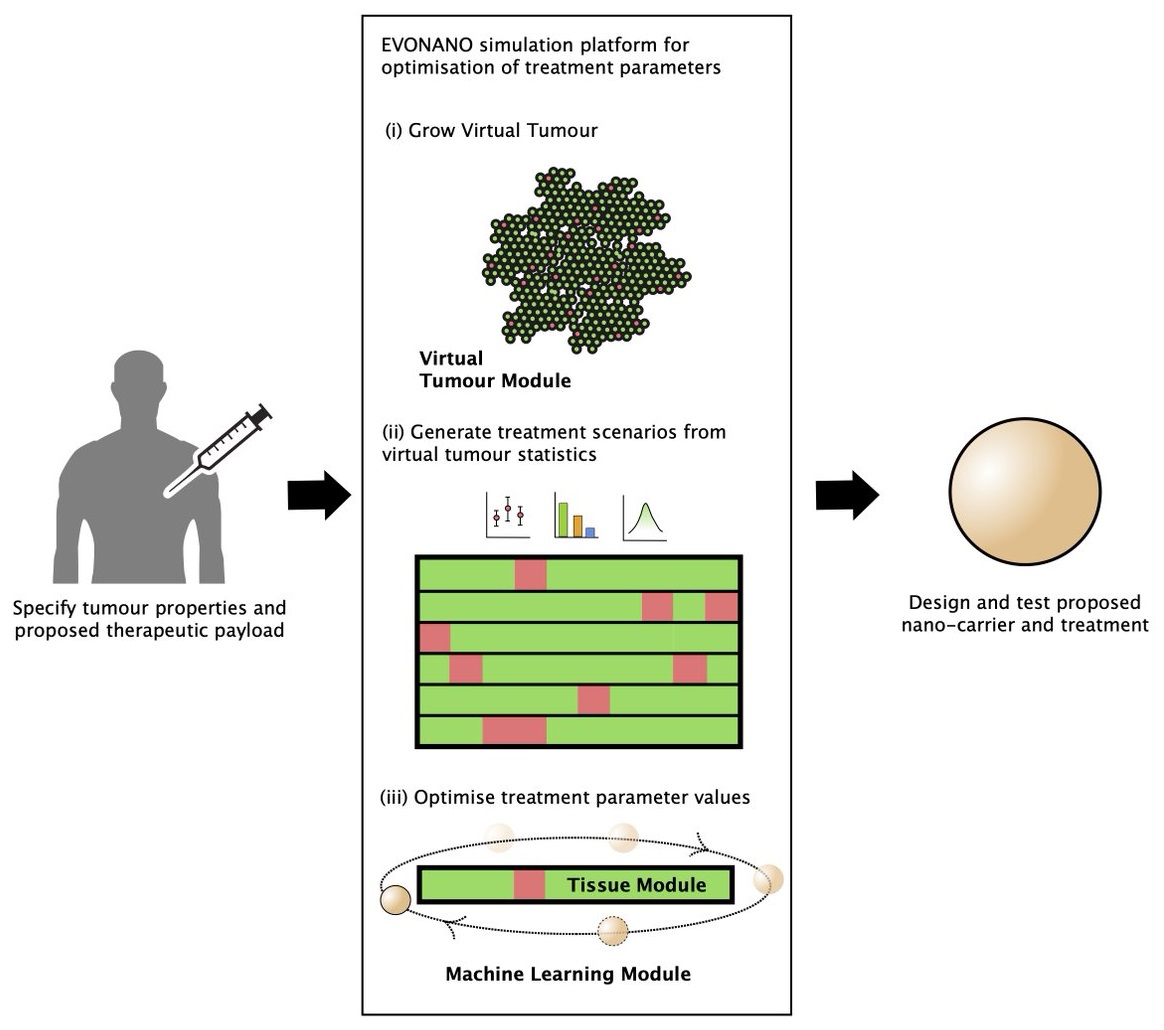The EVONANO platform allows scientists to grow virtual tumours and use artificial intelligence to automatically optimise the design of nanoparticles to treat them.
The ability to grow and treat virtual tumours is an important step towards developing new therapies for cancer. Importantly, scientists can use virtual tumours to optimise design of nanoparticle-based drugs before they are tested in the laboratory or patients.
The paper, ‘Evolutionary computational platform for the automatic discovery of nanocarriers for cancer treatment,’ published in the Nature journal Computational Materials, is the result of the European project EVONANO which involves Dr Sabine Hauert and Dr. Namid Stillman from the University of Bristol, and is led by Dr Igor Balaz at the University of Novi Sad.

The EVONANO platform can grow virtual tumours and use AI to automatically optimise the design of nanoparticles to treat them.
“Simulations enable us to test many treatments, very quickly, and for a large variety of tumours. We are still at the early stages of making virtual tumours, given the complex nature of the disease, but the hope is that even these simple digital tumours can help us more efficiently design nanomedicines for cancer,” said Dr Hauert.
Dr Hauert said having the software to grow and treat virtual tumours could prove useful in the development of targeted cancer treatments.
“In the future, creating a digital twin of a patient tumour could enable the design of new nanoparticle treatments specialised for their needs, without the need for extensive trial and error or laboratory work, which is often costly and limited in its ability to quickly iterate on solutions suited for individual patients,” said Dr Hauert.
Nanoparticle-based drugs have the potential for improved targeting of cancer cells. This is because nanoparticles are tiny vehicles that can be engineered to transport drugs to tumours. Their design changes their ability to move in the body, and correctly target cancer cells. A bioengineer might, for example, change the size, charge or material of the nanoparticle, coat the nanoparticles with molecules that make them easy to recognise by cancer cells, or load them with different drugs to kill cancer cells.
Using the new EVONANO platform, the team were able to simulate simple tumours, and more complex tumours with cancer stem cells, which are sometimes difficult to treat and lead to relapse of some cancer patients. The strategy identified nanoparticle designs that were known to work in previous research, as well as potential new strategies for nanoparticle design.
As Dr. Balaz highlights: “The tool we developed in EVONANO represents a rich platform for testing hypotheses on the efficacy of nanoparticles for various tumour scenarios. The physiological effect of tweaking nanoparticle parameters can now be simulated at the level of detail that is nearly impossible to achieve experimentally.”
The challenge is then to design the right nanoparticle. Using a machine learning technique called artificial evolution, the researchers fine tune nanoparticle designs until they can treat all scenarios tested while preserving healthy cells to limit potential side-effects.
Dr. Stillman, co-lead author on the paper with Dr. Balaz, said: “This was a big team effort involving computational researchers across Europe over the past three years. I think this demonstrates the power of combining computer simulations with machine learning to find new and exciting ways to treat cancer.”
In the future, the team aims to use such a platform to bring digital twins closer to reality by using data from individual patients to grow virtual versions of their tumours, and then optimise treatments that are right for them. In the nearer term, the platform will be used to discover new nanoparticle strategies that can be tested in the laboratory. The software is open source, so there is also hope other researchers will use it to build their own AI-powered cancer nanomedicine.
“To get closer to clinical practice, in our future work we will focus on replicating tumour heterogeneity and drug resistance emergence. We believe these are the most important aspects of why cancer therapy for solid tumours often fails,” said Dr Balaz.
Read the original article on University of Bristol.







